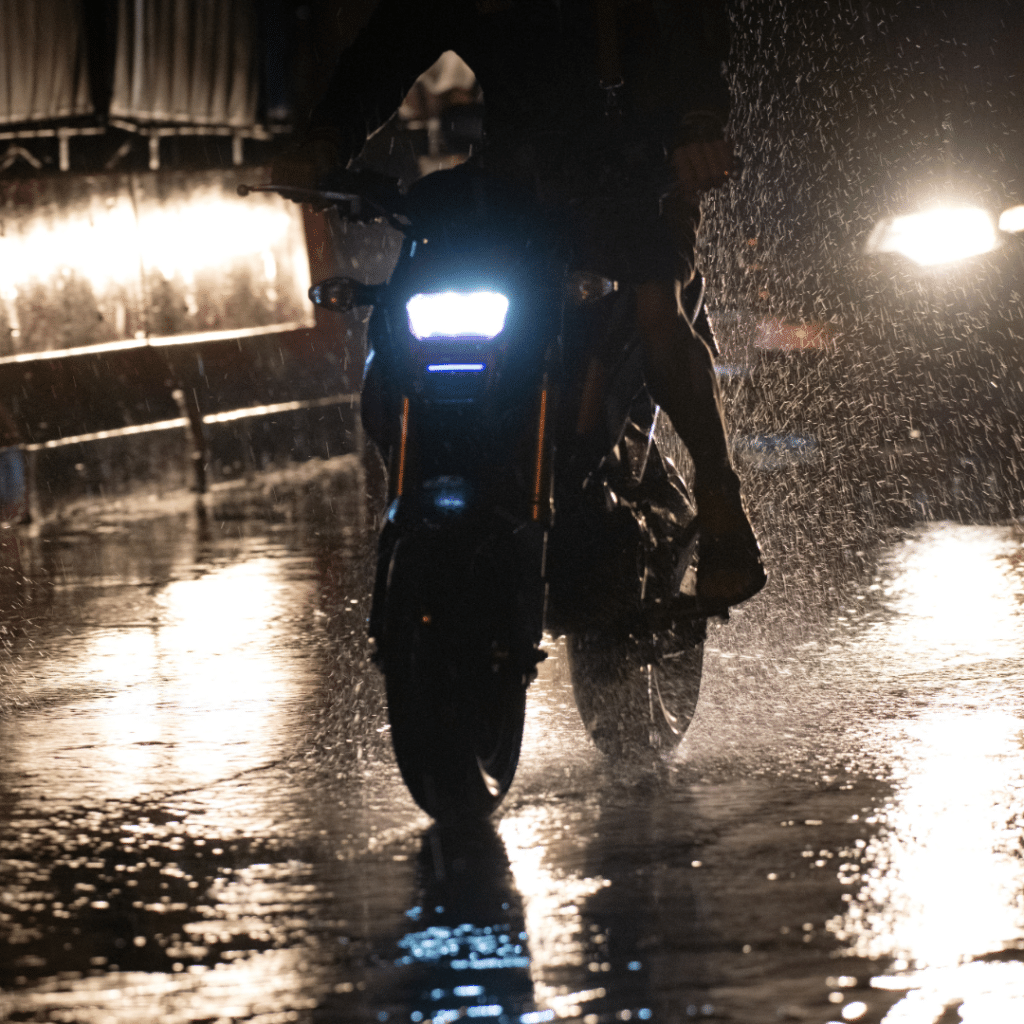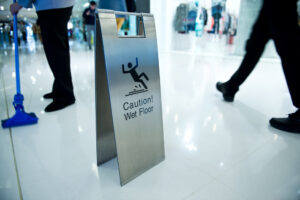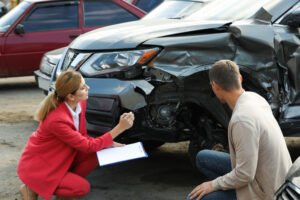For those who have never experienced the thrill and danger of riding a motorcycle, it’s hard to grasp the risks that motorcyclists face every time they hit the road. A minor collision for a car driver could be a life-threatening event for a motorcyclist.
Unlike cars, motorcycles lack protective steel frames, airbags, and seatbelts. This absence of safety features makes motorcycle operators and passengers significantly more vulnerable to crashes. Motorcycle occupants are 22 times more likely to be killed in a crash than car occupants. They are also four times more likely to sustain injuries. This stark contrast in safety should remind all drivers to exercise extra caution when sharing the road with motorcycles.
Florida is the second most popular state for motorcycle ownership. It’s also a top destination for two-wheeled tourists, but a hotbed for motorcycle accidents. This year alone, the Sunshine State has witnessed a staggering 2,555 motorcycle crashes, resulting in 155 fatalities and 2,191 injuries. Last year, the numbers were equally alarming, with 9,525 accidents, 605 deaths, and 8,191 injuries. These statistics underscore the pressing need for increased awareness and caution on the roads.
Ask anyone riding one, and they’ll tell you that motorcycles are fun to ride and economical on gas. However, you’ll also hear of the close encounters riders have with other vehicles, road debris, and even small animals that can send a motorcyclist to the hospital. For example, a rabbit scurrying across a road can be a life-ending encounter for both the animal and the motorcycle operator who runs into it at highway speed.
May, Motorcycle Awareness Month, prompts a crucial blog to raise driver-motorcyclist awareness on overlooked road hazards. It includes an explanation of what drivers and riders can do to reduce the risk of accidents. These are caused by some of the most common road hazards encountered by motorcycles. Also included is an explanation of the legal and compensation issues arising from motorcyclist injuries and deaths caused by the negligence of other parties.
Common hazards making roads unsafe for motorcycles
Road hazards confronting motorcycles run the gamut from potholes to animals. Motorcycle operators must maintain constant awareness of their surroundings to recognize hazards and take defensive measures to avoid them. Here are some of the common hazards you may encounter when riding on a motorcycle:
Potholes and crumbling pavement
Maintaining control when riding on only two wheels requires balance. Riding into a pothole can cause a rider to lose control. It can also dent rims and cause the undercarriage to strike against the road’s surface, further affecting a rider’s ability to control the motorcycle.
Another pavement issue motorcyclists encounter is the outer edges of the pavement along the sides of the road where it meets the shoulder. Riding over a portion of the roadway that gives way can cause a rider to lose the ability to steer the bike and crash.
The best way to avoid riding into a pothole or other defective payment condition is to avoid distractions and focus on the road. If you see a pothole and cannot ride around it, slowing down can keep you from losing control. Avoiding riding along the edges of the pavement can help you avoid crumbling pavement.
A rider or passenger injured in a motorcycle crash caused by potholes or crumbling pavement may have a claim against the party responsible for maintaining the road. This could be a government entity if the accident occurred on a public road maintained by the state or local government. When an accident occurs on a private road or a parking lot, the responsible party could be the owner.
Proving liability for poor road or parking lot maintenance requires evidence that the owner or government entity knew the condition before the accident. These types of claims for damages are difficult to prove without representation by a skilled personal injury attorney who knows the law and how to establish liability.
Weather conditions
Riding on a motorcycle when it’s raining is not only a miserable experience but also extremely dangerous. Vehicles traveling on roads leave behind oil, rubber, and other residue. Combined with rainwater, this makes the pavement slick and slippery. You may not notice it when driving a car, but it affects your ability to maintain control over a motorcycle.
When it’s raining, you must adjust your speed and slow down to prevent losing control when riding. Remember that stopping will also be affected. Increase the distance between your motorcycle and other vehicles to avoid crashing into another vehicle or having a vehicle crash into you from behind.
Sometimes, the safest thing to do when it’s raining hard is to find a safe place. It’s best to stop under an overpass to pull over and wait out the storm. Avoid stopping under trees if there is a threat of lightning.
Sand and gravel on the road
When riding a two-wheeled vehicle, you learn to appreciate the importance of maintaining tire contact with the road surface. Sand and gravel prevent the rubber of your tires from maintaining contact with the road. This can cause your bike to lose traction and slide, or worse.
Sand and gravel usually accumulate on the outer edges of a road’s surface, so staying toward the center of your travel lane should allow you to avoid dangerous situations. If you come upon a section of road covered with gravel or sand, you should slow down and stop to determine how to ride through it safely. It may be better to go around a section of road that appears too dangerous to ride on.
Wildlife
Animals of all shapes and sizes frequently make their way onto roads, creating a hazard for motorcycles. The key to avoiding a collision is to create space to give yourself time to react safely. The typical reaction to seeing an animal on the road is a sudden swerve. Unfortunately, swerving can cause a rider to lose control of a motorcycle.
A better approach is to position your motorcycle far enough away from the shoulders of a road to give yourself time to gently apply the brake to reduce your speed. Space also gives you time to think about your options, such as stopping or slowing enough to let the animal get off the road. Swerving should be your last resort, but the space you create gives you time to do it safely without losing control or crashing into another vehicle.
Hazards associated with people and vehicles
Motorcycle Awareness Month recognizes that drivers and motorcyclists share responsibility for changing unsafe behaviors that make roads dangerous for motorcycle riders. Here are a few of the behaviors that cause injuries and deaths.
Riding in a motorist’s blind spot
Every vehicle has blind spots. These are the places around the outside of cars, SUVs, and trucks that a driver cannot see by using only side or rear-view mirrors. Drivers should be aware of blind spots and use signals when changing lanes. If possible, drivers should turn their heads to see into the blind spot.
Motorcycle operators can do their part to stay safe by avoiding riding in the blind spot of other vehicles. When changing lanes, riders should adjust their speed to avoid entering a lane in the blind spot.
Lane splitting
No one likes sitting in a traffic jam, so some states allow motorcycles to ride between lanes of stopped vehicles. Law splitting is dangerous, and it’s illegal in Florida.
Left-turning cars
A common and deadly accident scenario involves a vehicle making a left turn and crashing into an oncoming motorcycle. A motorcycle’s smaller size than other types of vehicles makes it difficult for drivers to see them and judge their rate of speed.
Drivers need to be extra cautious and take a second look before turning to avoid turning into the path of a motorcyclist. Motorcyclists can do their part by being aware of vehicles preparing to make turns and making themselves visible by wearing bright-colored clothing. It’s best to keep your headlights on during the day.
Drug and alcohol impairment
Impairment caused by drugs, alcohol, or a combination of both has as much of an effect on motorcycle operators’ ability to ride safely as it does on motorists, perhaps even more so. An impairment affects a person’s judgment, coordination, balance, and vision. These are all essential for the safe operation of a motorcycle.
For example, the left hand and left foot work the clutch and change gears while the right-hand controls the throttle and front brake. As all that goes on, the rider’s right foot controls the rear brake. Applying the front brake sooner or harder than the rear brake could crash a motorcycle and injure or kill its rider.
Advice about motorcycle accidents from Tampa injury lawyers
When the negligence of someone else causes a motorcycle rider to be injured or killed in a crash, the Tampa motorcycle accident lawyers at KFB Law are there to help with trusted advice and representation. Learn more about your rights in a motorcycle crash by contacting KFB Law today for a free consultation.



